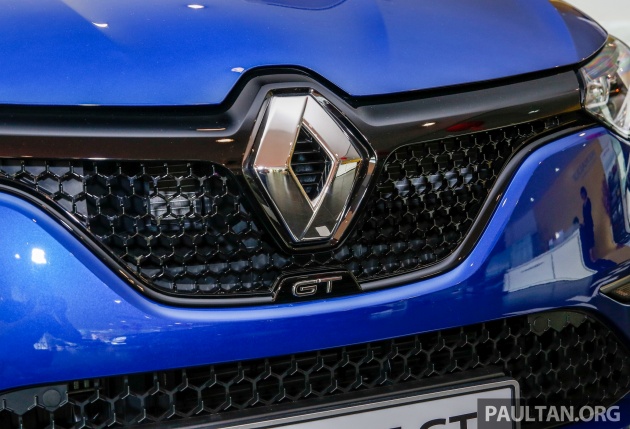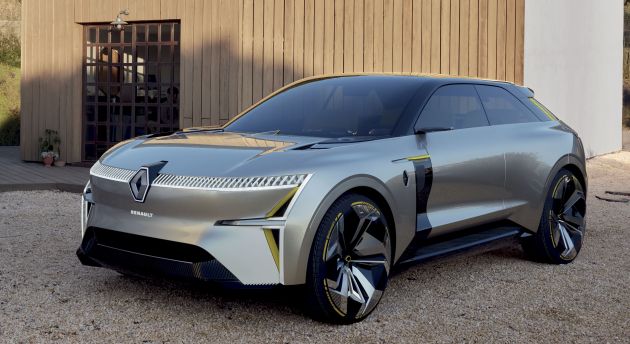
Renault plans range-wide overhaul of product, tech, resources – two new CMF-EV SUVs planned: report
by Mick ChanRenault is planning for an overhaul which will lead to more extensive sharing of platform, technology and manufacturing resources too improve efficiency as a result of its new partnership agreement with Nissan, and will also include a revamping of its model line-up, Autocar reported.
The French brand will also take the alliance’s strategic lead in Europe with the installation of new CEO Luca de Meo, who has started the brand’s product roadmap overhaul despite having just started his role in July this year. Among de Meo’s goals will be to return the French brand to the black, after it charted a loss of GBP 6.5 billion (RM34.6 billion) last year.
The first fruits of the recently consolidated resources have already emerged, namely the CMF-EV platform that debuted in the Nissan Ariya. This will provide the basis for electric SUVs from Nissan and Renault in the future, the magazine reported.
The French automaker will initially release two fully electric models from the CMF-EV platform, led by a high-riding production version of the Morphoz concept which has been tipped to be similar in length and width to the Renault Kadjar, says Autocar.

Renault Morphoz concept
That said, Renault’s production EV will be lower to the ground than the Kadjar due to a greater need for aerodynamic efficiency to gain the maximum possible battery range, in order to accommodate a higher percentage of its customers’ EV usage in Europe.
“We identified there was room below the Zoe, but even more expectation above (it). People are realising that EVs are safe and enjoyable, and can be taken on much longer trips than earlier EVs,” said Renault head of electric vehicles Gilles Normand.
Normand targets a range of 547 km for such a model; the current CMF-EV platform-based model, the Ariya gets up to 450 km of range on the WLTP in its smallest, 63 kWh battery in single-motor form. At the other end of the range, the 87 kWh battery equipped 239 hp single-motor Ariya does 610 km, or 580 km in the twin-motor 388 hp/600 Nm variant.
Along with efficiencies enabled through the alliance, Renault also claims that the CMF-EV platform has brought significant cost breakthroughs. This has brought a 30% reduction on platform cost, while battery cost and electric motor cost have come down by 30% and 20% respectively, said Renault director of EV development Jean-Paul Drai.


The second of the two EV models will sized closer to the Juke and Captur
This would make the next generation of Renault EVs become “very close to comparable vehicles with an internal combustion engine-powered vehicle in total cost of ownership,” said Drai.
A second, though yet to be confirmed EV has also been hinted at by Normand; one that will be a crossover or SUV rather than a hatchback, he said. This electric model is expected to be positioned similar to the Nissan Juke and the Renault Captur, the magazine reported.
This smaller CMF-EV model will also be expected to draw from the design themes of the Morphoz concept, though this will be applied in a more restrained manner to help differentiate between itself and the aforementioned larger, Kadjar-sized model.
A dedicated EV platform such as this is expected to incur increased development costs over rival versions that have been adapted from existing internal combustion platforms, such as the Peugeot e-2008. The pay-off for the added development costs are benefits for both exterior design as well as interior practicality, says Autocar.


EVs built from existing internal combustion platforms such as the Peugeot 2008 are cheaper to develop, though a dedicated EV platform benefits exterior design and interior space
“A dedicated platform allows us to push the boundaries of the proportions of the vehicle – to push the wheelbase to an extreme level. (In) doing so, we reconfigure the cabin. We get a fully flat floor and do not lose space on the rear bench. We think this investment is fully recognised by our customers,” Nissan product planning chief Marco Fioravanti told Autocar.
Despite the unveiling of a ‘leader-follower’ initiative detailed by the Renault-Nissan-Mitsubishi alliance in May, under which Renault will lead development of European models and Nissan will focus on Japan North America and China, Nissan will not be made to pull out from the European market, said Fioravanti.
“Leader-follower does not mean that there is one dominating company and one ‘satellite’ of the first company. Nissan is still the leader on CMF-EV. Nissan leads on autonomous driving. It simply means we can avoid redundancies in development,” the product planning chief said.
Examples given were that next-generation B-segment vehicles will be led in Europe by Renault, and the next Micra or Juke will be developed together with the Clio and Captur, he said, while Nissan will take the lead on a C-segment platform. “We can avoid duplicating the job so we can get to a maximum level of efficiency overall,” said Fioravanti.


It remains to be seen if the Megane will continue to be developed for the same segment, or be succeeded by a C-segment SUV such as the Arkana(right)
Declining Megane sales casts uncertainty over the future of the model, along with the company’s increasing focus on the development of electric vehicles, according to an earlier report. CEO De Meo said in a recent results webcast that Renaults reworked product plan will return the brand to its position “at the heart of the European market, on the centre of gravity that is now in the C- and C-plus segments.”
De Meo noted that the first-generation Megane “changed the company, and we have to do the same again,” though it remains to be seen if the Megane will be remain in its current forms, or be reinvented as an SUV. A C-segment SUV possibility within the brand is the Arkana that was first launched in Russia, which Autocar suggests could be brought over to expand the European market’s product range.
Lastly, the Autocar report suggests that the future of sports car brand Alpine is uncertain, owing to an official Renault statement that claims there will be an “open reflection on the reconversion of the Dieppe plant at the end of production of the Alpine A110.” Alpine’s time is far from due, however, as it will be the name of what is currently the Renault Formula 1 team from 2021.